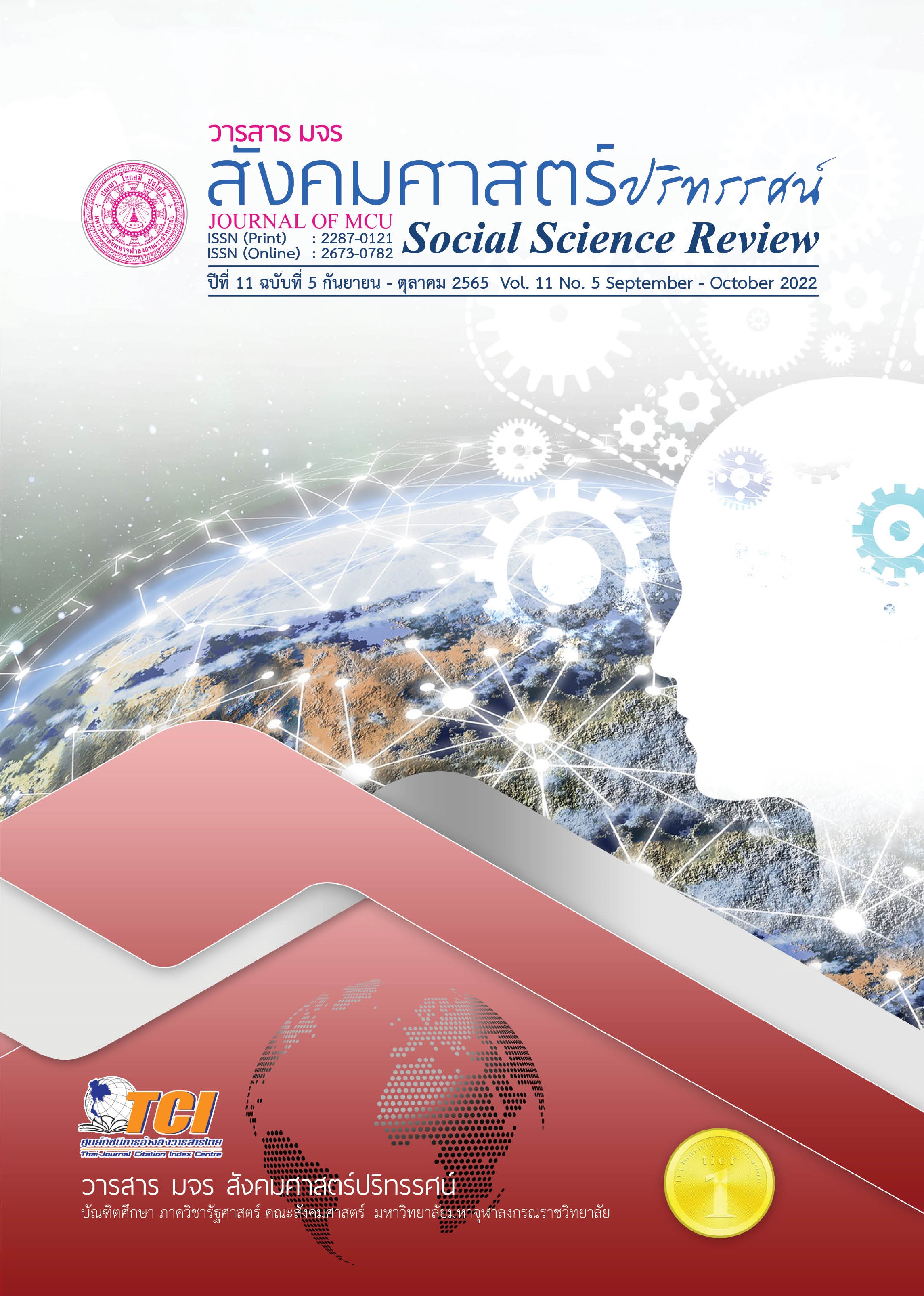การศึกษาเปรียบเทียบกฎหมายรัฐธรรมนูญและสถาบันการเมืองของ สาธารณรัฐอินโดนีเซียและสาธารณรัฐฟิลิปปินส์
คำสำคัญ:
กฎหมาย, รัฐธรรมนูญ, สถาบันการเมืองบทคัดย่อ
บทความนี้มีวัตถุประสงค์ 1. เพื่อศึกษาวิวัฒนาการทางการเมือง การปกครอง ตลอดจนรัฐธรรมนูญและสถาบันทางการเมือง 2. เพื่อวิเคราะห์ความสัมพันธ์ระหว่างอำนาจนิติบัญญัติกับอำนาจบริหารในรูปแบบการปกครองตามระบบประธานาธิบดีของสาธารณรัฐอินโดนีเซีย และสาธารณรัฐฟิลิปปินส์ เป็นการศึกษาค้นคว้าเอกสาร วิเคราะห์ข้อมูลเชิงพรรณนา
ผลการวิจัยพบว่า 1. วิวัฒนาการทางการเมือง การปกครอง ตลอดจนรัฐธรรมนูญและสถาบันทางการเมืองตั้งแต่อดีตถึงปัจจุบันของสาธารณรัฐอินโดนีเซีย และสาธารณรัฐฟิลิปปินส์ มีความคล้ายคลึงกัน ด้วยการที่ทั้งสองประเทศมีลักษณะภูมิประเทศเป็นหมู่เกาะจึงเป็นประเทศที่เต็มไปด้วยความแตกต่างด้านภาษา ชาติพันธุ์ วัฒนธรรมและความคิดทางการเมืองนั้น วิวัฒนาการทางการเมืองการปกครองของทั้งสองประเทศถือได้ว่ามีความน่าสนใจ เพราะต่างก็เคยตกอยู่ภายใต้การปกครองของต่างชาติ และต่อสู้เพื่อให้ได้มาซึ่งเอกราชมาเหมือนกัน 2. ความสัมพันธ์ระหว่างอำนาจนิติบัญญัติกับอำนาจบริหารในรูปแบบการปกครองตามระบบประธานาธิบดี ของสาธารณรัฐอินโดนีเซีย และสาธารณรัฐฟิลิปปินส์ซึ่งเป็นระบบแบ่งแยกอำนาจ เช่นเดียวกันกับสหรัฐอเมริกา มีประธานาธิบดีเป็นประมุข และหัวหน้าฝ่ายบริหาร คณะรัฐบาลอยู่ใต้อำนาจของประมุขแห่งรัฐ ฝ่ายบริหารเป็นอิสระต่อการควบคุมต่อรัฐสภา (ฝ่ายนิติบัญญัติ) ทั้งนี้ ฝ่ายนิติบัญญัติของทั้งสองประเทศมีการใช้รูปแบบรัฐสภาที่แตกต่างกัน โดยรัฐสภาของอินโดนีเซียใช้รูปแบบสภาเดี่ยว ส่วนฟิลิปปินส์ใช้รูปแบบสภาคู่
เอกสารอ้างอิง
กรมอาเซียน กระทรวงการต่างประเทศ. (2563). ASEAN Mini BOOK. กรุงเทพฯ: Page Maker Co.,Ltd.
ชัยยนต์ ประดิษฐศิลป์. (2555). เอกสารประกอบการสอนความรู้พื้นฐานทางรัฐศาสตร์. จันทบุรี: มหาวิทยาลัยราชภัฏรำไพพรรณี.
ณัฐธิดา บุญธรรม. (2556). ระบบการปกครองท้องถิ่นของประเทศสาธารณรัฐฟิลิปปินส์. กรุงเทพฯ: สถาบันพระปกเกล้า.
ทวีศักดิ์ เผือกสม. (2547). ประวัติศาสตร์อินโดนีเซีย. กรุงเทพฯ: สำนักพิมพ์เมืองโบราณ.
นงนุช เนาวรัตน์. (2551). ผู้ตรวจการแผ่นดินแห่งสาธารณรัฐฟิลิปปินส์ Office of the Ombudsman, Republic of the Philippines. วารสารผู้ตรวจการแผ่นดิน, 1(3), 62-85.
เพ็ชรี สุมิตร. (2557). ประวัติศาสตร์อินโดนีเซีย (พิมพ์ครั้งที่ 3). กรุงเทพฯ: มูลนิธิโครงการตำราสังคมศาสตร์และมนุษยศาสตร์. มหาวิทยาลัยพะเยา.
ภาณุวัฒน์ พันธุ์ประเสริฐ. (2556). ระบบการปกครองท้องถิ่นของประเทศสาธารณรัฐอินโดนีเซีย.กรุงเทพฯ: สถาบันพระปกเกล้า.
ศาสตรินทร์ ตันสุน. (2560). รัฐธรรมนูญและสถาบันการเมืองที่เข้มแข็ง: ความสำเร็จของระบอบประชาธิปไตยในสาธารณรัฐอินโดนีเซีย. วารสารรัฐศาสตร์ปริทรรศน์มหาวิทยาลัย เกษตรศาสตร์, 4(2), 28-46.
สีดา สอนศรี. (2551). ฟิลิปปินส์: จากอดีตสู่ปัจจุบัน (ค.ศ. 1986-2006). กรุงเทพฯ: มหาวิทยาลัยธรรมศาสตร์.
Brown, C. (2003). A Short History of Indonesia. New South Wales: Allen &Unwin.
ดาวน์โหลด
เผยแพร่แล้ว
รูปแบบการอ้างอิง
ฉบับ
ประเภทบทความ
สัญญาอนุญาต
ลิขสิทธิ์ (c) 2022 วารสาร มจร สังคมศาสตร์ปริทรรศน์

อนุญาตภายใต้เงื่อนไข Creative Commons Attribution-NonCommercial-NoDerivatives 4.0 International License.
เพื่อให้เป็นไปตามกฎหมายลิขสิทธิ์ ผู้นิพนธ์ทุกท่านต้องลงลายมือชื่อในแบบฟอร์มใบมอบลิขสิทธิ์บทความให้แก่วารสารฯ พร้อมกับบทความต้นฉบับที่ได้แก้ไขครั้งสุดท้าย นอกจากนี้ ผู้นิพนธ์ทุกท่านต้องยืนยันว่าบทความต้นฉบับที่ส่งมาตีพิมพ์นั้น ได้ส่งมาตีพิมพ์เฉพาะในวารสาร มจร สังคมศาสตร์ปริทรรศน์ เพียงแห่งเดียวเท่านั้น หากมีการใช้ภาพหรือตารางหรือเนื้อหาอื่นๆ ของผู้นิพนธ์อื่นที่ปรากฏในสิ่งตีพิมพ์อื่นมาแล้ว ผู้นิพนธ์ต้องขออนุญาตเจ้าของลิขสิทธิ์ก่อน พร้อมทั้งแสดงหนังสือที่ได้รับการยินยอมต่อบรรณาธิการ ก่อนที่บทความจะได้รับการตีพิมพ์ หากไม่เป็นไปตามข้อกำหนดเบื้องต้น ทางวารสารจะถอดบทความของท่านออกโดยไม่มีข้อยกเว้นใดๆ ทั้งสิ้น





